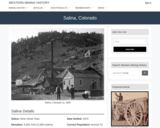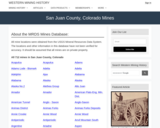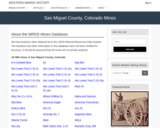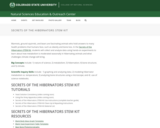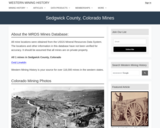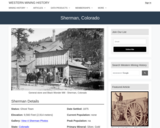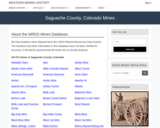
This Western Mining History database uses Mineral Resources Data System to list known Colorado historical mines by county. Each county site has links to the known mines within its borders. Some are known and named, others are unnamed. Mines should be assumed to be on private property unless other research is conducted. Data provided for each mine site include: Name, State, County, Elevation, Primary Mineral Mined, Latitude and Longitude and a link to Google Maps. Photos are provided where available. Additional information for some Mines are satellite photos, and ownership, business and historical records. Mining History is an historical site that provides information on mining, mining towns, the gold and silver rush, and Photos and maps of the western United States. This is a great database for student historical research or data and statistics classes. Consider becoming a member or making a donation to help further the work of the site.
- Subject:
- Anthropology
- Applied Science
- Chemistry
- Cultural Geography
- Earth and Space Science
- Economics
- English Language Arts
- Environmental Science
- Geology
- Geoscience
- History
- Mathematics
- Measurement and Data
- Physical Geography
- Physical Science
- Reading Informational Text
- Social Science
- Sociology
- U.S. History
- Material Type:
- Data Set
- Primary Source
- Reading
- Provider:
- Western Mining History
- Provider Set:
- Historical Colorado Mines
- Date Added:
- 02/06/2023



